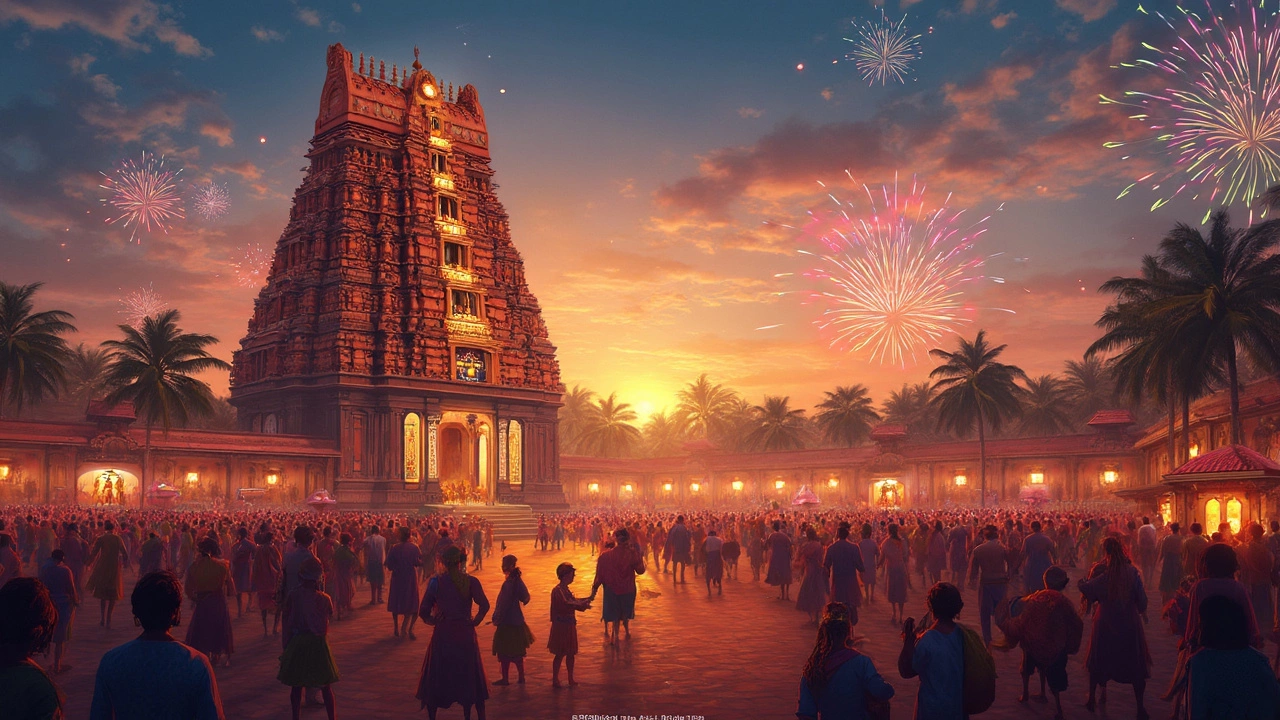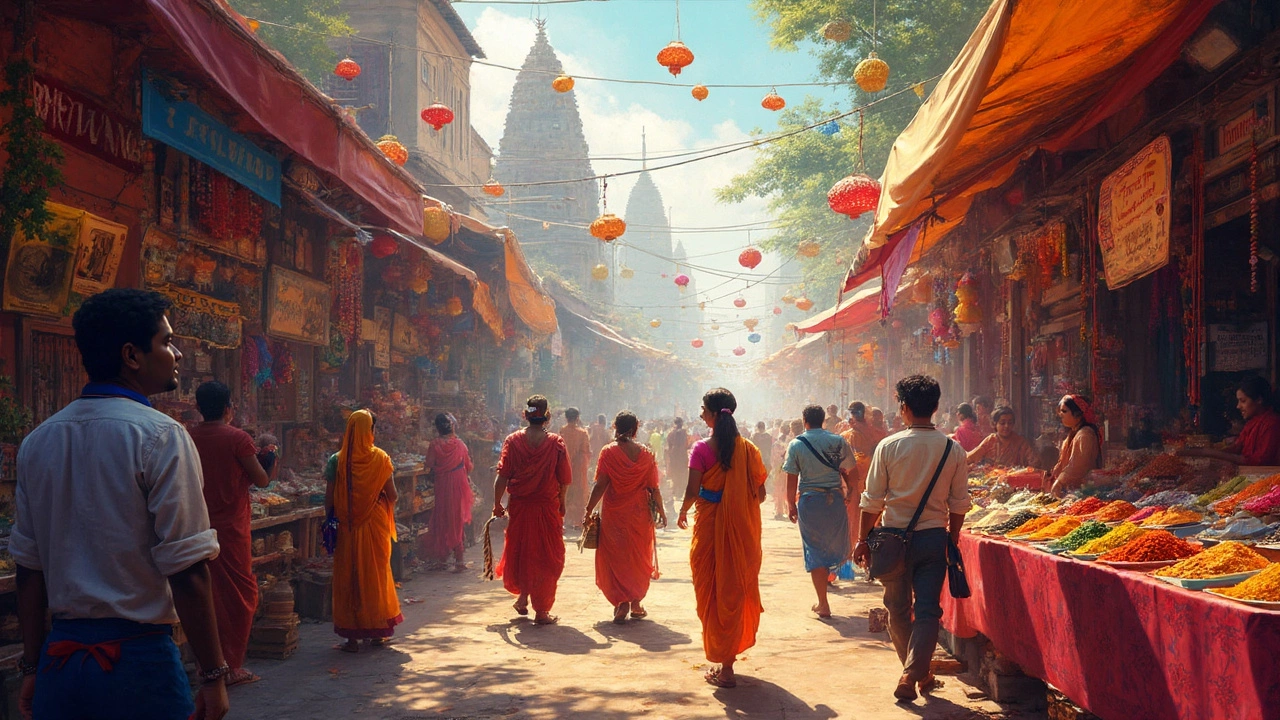So, you're planning a trip to South India and wondering about the best month to visit? You’re not alone. Timing can make or break your adventure, and with South India's diverse climate and cultural richness, getting it right means you'll enjoy every moment. Picking the right month isn't just about weather—it's about maximizing your experience.
Weather in South India varies from place to place. If beaches and the coastlines are on your agenda, December to February is like hitting the jackpot—sunny but not too hot. Thinking of hill stations? Summers, especially April to June, offer cooler, refreshing vibes. Just remember, monsoons from June to September drench the region, but they also revitalize its greenery.
Then there are the festivals—Diwali, Pongal, and Onam to name a few. They're not just cultural events; they're colorful explosions of life and celebration that offer unique glimpses into the regional culture. Check the festival dates and see if they line up with your trip.
- Why Timing Matters
- Weather Wizards: Navigating the Climate
- Festival Fun: Timing Your Visit for Celebrations
- Crowd Control: Beat the Rush
- Packing Tips for All-Season Travel
Why Timing Matters
Picking the right month for your adventure in South India can truly enhance your experience, so understanding why timing matters is key. First off, this region has a diverse climate—far more than just hot or rainy days. Different times of the year can offer vastly different experiences depending on your interests.
Navigating the Climate
Weather is the biggie. If you're heading for the beaches of Goa or Kerala, the months from December to February are ideal. Mild weather with plenty of sunshine lets you soak up the beauty without melting away. Hill stations like Ooty or Munnar are best visited during the summer months, offering a cool escape from the heat that grips most plains.
Festival Extravaganza
Have a thing for cultural immersion? Festivals could make your trip unforgettable. Planning your visit around major celebrations is a great way to witness rich traditions first-hand. Ever experience Diwali in Chennai? The lights and celebrations are something else. Pongal in Tamil Nadu offers another spectacular event, celebrated in mid-January, marking the harvest season.
Here’s a handy table of the top festivals in South India by month:
| Month | Festival |
|---|---|
| January | Pongal |
| March-April | Ugadi |
| August-September | Onam |
Crowd Control
Avoiding the rush means fewer crowds and a more peaceful trip. Peak tourist seasons can get busy and pricy, particularly during school holidays or major festivals. If you prefer solitude or travel on a budget, visiting slightly off-peak can be rewarding. Just think of quieter temples and less crowded beaches.
So there you have it—the timing of your trip to South India is more than just a calendar choice; it's about crafting the perfect adventure.
Weather Wizards: Navigating the Climate
When planning a trip to South India, understanding the climate can make all the difference. With its varied landscapes—from the stunning beaches to lush hills—it means the weather can swing in different directions. So, knowing when to go where is key.
Coastal Charms: December to February
If you're dreaming of sun-kissed beaches, then December to February is your golden window. These months have pleasant days, perfect for chilling on the sands or exploring coastal towns. Popular spots like Kerala's beaches or Goa's shoreline overflow with sunshine, making these times ideal for water activities and sunset views.
Hill Stations Cool-Off: March to May
Thinking of escaping the heat? The hill stations like Ooty or Munnar offer a cool sanctuary from March to May. These places transform into vibrant green wonderlands, inviting travelers to trek, explore tea plantations, or simply relax with cool breezes.
Monsoon Magic: June to September
The monsoon months of June to September bring heavy rains across the region. While this might sound like a deterrent, the rain breathes life into the landscapes, blanketing South India in lush greenery. If you're an adventurous soul who loves rain-drenched views and fewer crowds, this might just be your favorite time.
| Month | Temperature Range (°C) | Ideal Activities |
|---|---|---|
| December - February | 24 - 30 | Beach activities, sightseeing |
| March - May | 20 - 35 | Hill trekking, plantation visits |
| June - September | 25 - 32 | Nature walks, monsoon treks |
Once the rains retreat by October, South India steadily warms up, but it's still sans the scorch. October to November can be your bonus chill time if you missed the early year delight. Always remember, wherever you go, keep an eye on local weather updates to tweak your plans accordingly. Enjoy the diverse beauty of South India!

Festival Fun: Timing Your Visit for Celebrations
South India is not just a place you visit, it's an experience, especially during festival times. Planning your trip around these festivals can turn an ordinary vacation into an extraordinary one. Here's why.
Major Festivals to Experience
One of the most popular festivals is Pongal, celebrated in January, marking the Tamil Harvest. Tamil Nadu transforms into a colorful spread of festivities, complete with traditional music and dance.
If you're around in August or September, catch the vibrant spectacle of Onam in Kerala. It's a ten-day celebration featuring grand feasts, boat races, and cultural showcases that you'll remember forever.
Unique Experiences
Don't miss out on the Diwali celebrations if you're visiting around October or November. It's the festival of lights, where cities and towns across South India illuminate the night sky with fireworks, bringing communities together in joy.
- Ugadi: The Telugu and Kannada New Year, celebrated with a feast of flavors.
- Hampi Festival: Usually in November, a three-day cultural fiesta with music and puppet shows.
Plan Accordingly
It’s wise to book flights and accommodation early during festival seasons as many tourists flock to witness these events. I recommend checking the specific dates online since they can vary each year due to the lunar calendar.
Whether it’s the colors of Rajasthan or the serene backwaters of Kerala, visiting during festivals adds a magical layer to your South India trip. Just remember to check the dates and align your itinerary for a more immersive experience!
Crowd Control: Beat the Rush
Traveling through South India can be an exhilarating experience, but no one likes a crammed beach or an overcrowded temple. To truly enjoy the splendor and serenity of India's southern gems, it's essential to plan around peak tourist seasons.
Knowing the Peak Periods
Winter months, especially December and January, lure in tourists due to their delightful weather. During this time, popular spots like Kerala's backwaters or Goa's beaches can get quite bustling. While the energy is infectious, it's not the best if you’re looking for tranquility.
Summer holidays (April to June) in India see locals and tourists flocking to hill stations like Ooty or Munnar to escape the heat. If you prefer a quieter escape, consider visiting just before or after these months.
How to Escape the Crowds
- Visit Shoulder Seasons: Consider traveling during February-March or October-November. The climate is pleasant and the tourist crowds are far less intimidating.
- Plan Weekday Tours: Avoid weekends as they tend to attract local tourists, making weekdays a better option for peaceful exploration.
- Explore Offbeat Locations: While everyone heads to the famous destinations, you could opt for lesser-known gems such as the ancient city of Hampi or the serene shores of Gokarna.
Advance Booking
Stay ahead by booking accommodations and tickets in advance. This is crucial during festival times or long weekends. Not only does this save costs, but it ensures you have your spot in your preferred destination.
Use Technology to Your Advantage
Platforms like Google Maps can provide real-time updates on crowd density at various attractions. Utilize these to decide when and where to visit on the fly. Insider tip: Apps that showcase local events can also alert you to any impending crowd-pullers, allowing you to plan accordingly.
So, whether you're keen on a cultural deep dive or a leisurely coastal retreat, timing your visit right can make your South India travel dreams a seamless reality.

Packing Tips for All-Season Travel
Packing for South India can be tricky because the region's climate varies widely—there's more to it than just tossing in shorts and sunscreen. Let’s dive into practical tips to keep you comfortable no matter when you visit.
1. Clothing Essentials
For the dry, cool months from December to February, lightweight clothing is your friend. You’ll want breathable fabrics like cotton or linen. But remember, evenings can get a bit chilly, especially in hill stations, so toss in a light sweater or shawl.
If you're venturing in the summer months (April to June), think sun protection. Pack hats, sunglasses, and plenty of sunscreen. A mix of short sleeves and tank tops will keep you cool, but modest dress is appreciated in rural areas and religious sites.
2. Rain Gear for Monsoon Adventures
Heading out during monsoon (June to September)? Don’t forget a sturdy raincoat or an umbrella. Waterproof footwear will save your day amid sudden downpours. Remember, rain can be intense, transforming landscapes into lush green vistas.
3. Footwear Matters
South India’s terrains vary from sandy beaches to rocky hillsides. Comfortable walking shoes are a must. Think about a pair of sandals for the coast and breathable hiking boots if hill stations are on your list.
4. Gadgets and Travel Gear
Power inverters with multiple plug options are a lifesaver for keeping your devices charged. Consider a waterproof phone case to protect against unexpected rains or humidity.
5. Health and Safety Essentials
It’s smart to pack a basic first aid kit—band-aids, antiseptic wipes, and pain relief meds often come in handy. Even if you’re a seasoned traveler, you might want to bring travel-size hand sanitizers and insect repellent, especially during monsoon.
| Season | Essential Gear |
|---|---|
| December to February | Light sweater, breathable fabrics |
| April to June | Sunscreen, sunhat, sunglasses |
| June to September | Raincoat, waterproof footwear |
These tips should help you pack smart for your tourism in India, making sure you have all you need to focus on the sights and sounds. Safe travels!
